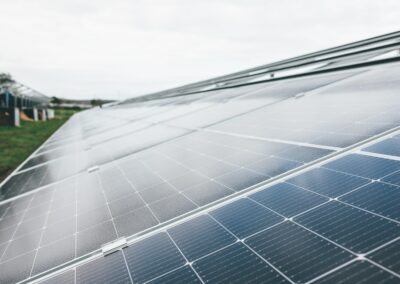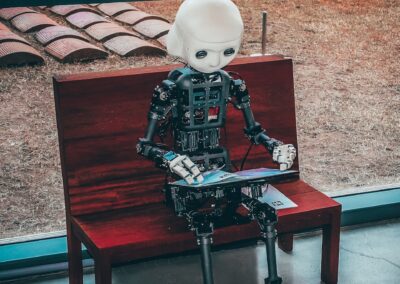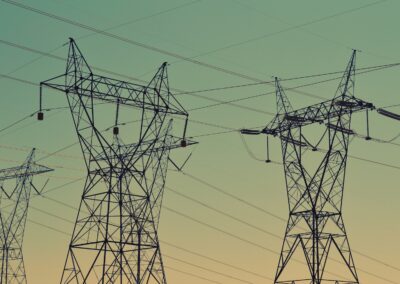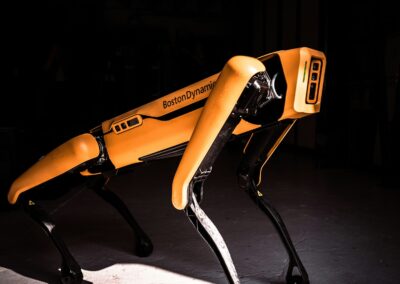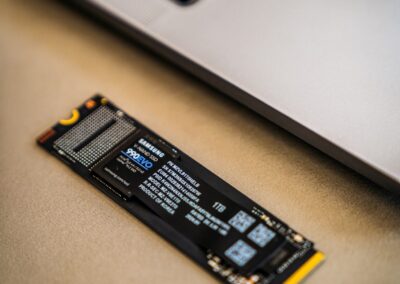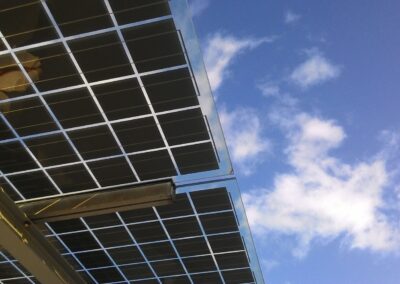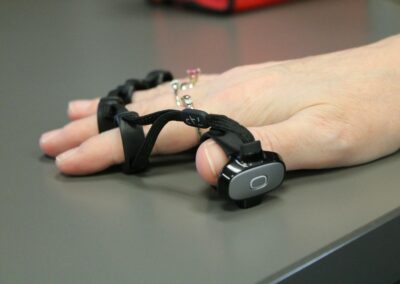Optimizing Efficiency and Performance through Real-Time Monitoring and Analysis
Introduction to Digital Twins in Energy Management
The use of digital twins in energy management has emerged as a transformative approach to optimizing the efficiency and performance of energy systems through real-time monitoring and analysis. Digital twins are virtual replicas of physical assets, systems, or processes that enable continuous data collection and analysis. This technology has the potential to revolutionize energy management by providing detailed insights into energy consumption patterns, identifying inefficiencies, and suggesting improvements.
In regions like Saudi Arabia and the UAE, where energy consumption is high due to extreme climatic conditions and rapid urbanization, the implementation of digital twins can significantly enhance energy efficiency. Cities such as Riyadh and Dubai are at the forefront of adopting modern technologies to achieve their sustainability goals. By leveraging digital twins, these cities can manage their energy resources more effectively, reduce waste, and ensure a sustainable future.
For business executives, mid-level managers, and entrepreneurs in the energy sector, understanding and implementing digital twin technology is crucial. It not only helps in optimizing energy usage but also provides a competitive edge in a market increasingly focused on sustainability and efficiency. Embracing digital twins in energy management aligns with the global push towards smart and sustainable cities, particularly in the Middle East.
Enhancing Efficiency through Real-Time Monitoring
One of the most significant advantages of using digital twins in energy management is the ability to conduct real-time monitoring of energy systems. Traditional energy management practices often rely on periodic data collection and analysis, which can result in delayed responses to inefficiencies. Digital twins, however, provide continuous monitoring, enabling immediate detection of anomalies and rapid implementation of corrective measures.
In cities like Riyadh and Dubai, where energy demands fluctuate due to varying weather conditions and economic activities, real-time monitoring is essential. Digital twins can track energy consumption patterns across different sectors and identify areas where energy is being wasted. For instance, in large commercial buildings, digital twins can monitor HVAC systems, lighting, and other energy-intensive operations, ensuring they operate at optimal efficiency. This proactive approach reduces energy waste and lowers operational costs.
Moreover, digital twins facilitate predictive maintenance, allowing facility managers to address potential issues before they escalate into costly failures. By analyzing data from various sensors and devices, digital twins can predict when equipment is likely to fail and schedule maintenance activities accordingly. This not only enhances the reliability of energy systems but also extends the lifespan of critical infrastructure. For businesses in Saudi Arabia and the UAE, where maintaining uninterrupted energy supply is vital, digital twins offer a robust solution for achieving energy resilience.
Optimizing Performance through Data-Driven Analysis
The use of digital twins in energy management goes beyond real-time monitoring; it also involves sophisticated data-driven analysis to optimize the performance of energy systems. Digital twins can simulate different scenarios, test various strategies, and provide actionable insights to improve energy efficiency. This analytical capability is particularly valuable in designing and managing complex energy networks.
In the context of smart city initiatives in Riyadh and Dubai, digital twins can integrate data from multiple sources, including renewable energy installations, grid infrastructure, and consumer usage patterns. This holistic view enables energy managers to optimize the distribution and consumption of energy, ensuring that supply meets demand efficiently. For instance, digital twins can help balance the load between solar panels and traditional power plants, maximizing the use of renewable energy and reducing dependence on fossil fuels.
Furthermore, digital twins support the implementation of demand response programs, where consumers are incentivized to reduce or shift their energy usage during peak periods. By analyzing real-time data, digital twins can identify optimal times for demand reduction and communicate this information to consumers. This dynamic interaction between energy providers and consumers enhances grid stability and reduces the risk of blackouts.
Challenges and Future Prospects
While the benefits of digital twins in energy management are substantial, there are challenges that need to be addressed to fully realize their potential. Ensuring the accuracy and reliability of digital twins requires high-quality data collection and advanced analytical tools. Additionally, integrating digital twins into existing energy management practices necessitates significant investment in technology and training for professionals.
In regions like Saudi Arabia and the UAE, where there is a strong commitment to technological innovation, these challenges are being actively addressed. Governments and private sector players are investing in digital twin technology, fostering partnerships with tech companies to drive their adoption. By overcoming these challenges, the energy sector can unlock the full potential of digital twins, paving the way for smarter and more efficient energy management practices.
Looking ahead, the role of digital twins in energy management is set to expand. Advances in artificial intelligence, machine learning, and the Internet of Things (IoT) will further enhance their capabilities, making them even more powerful tools for optimizing energy systems. As these technologies become more integrated into energy management practices, they will play a pivotal role in shaping the future of urban development in cities like Riyadh and Dubai.
Conclusion: Embracing Digital Twins for Energy Efficiency
The use of digital twins in energy management marks a significant advancement in the energy sector. By enabling real-time monitoring and data-driven analysis, digital twins are transforming the way energy systems are managed and optimized. In regions like Saudi Arabia and the UAE, the adoption of digital twin technology aligns with the vision of developing smart, sustainable, and innovative cities.
For business executives, mid-level managers, and entrepreneurs in the energy sector, investing in digital twin technology is a strategic decision that promises substantial returns. By embracing digital twins, energy companies can enhance their operational efficiency, reduce costs, and deliver high-quality services. As digital twin technology continues to evolve, its impact on the energy sector will only grow, driving progress and success in urban development.
—
#DigitalTwins #EnergyManagement #Efficiency #Performance #RealTimeMonitoring #SaudiArabia #UAE #Riyadh #Dubai #ArtificialIntelligence #Blockchain #TheMetaverse #ExecutiveCoachingServices #GenerativeArtificialIntelligence #ModernTechnology #BusinessSuccess #LeadershipSkills #ProjectManagement







